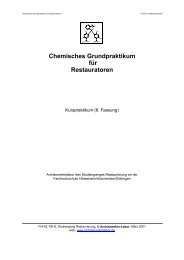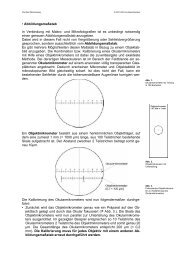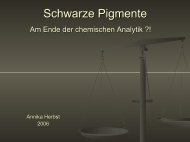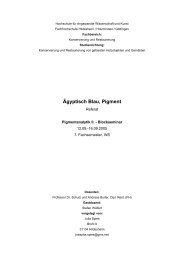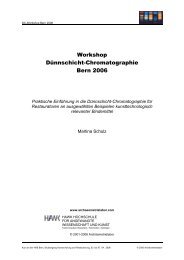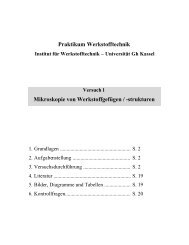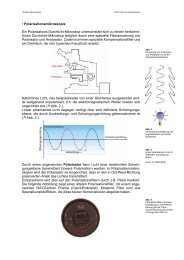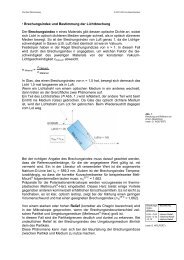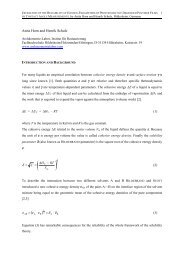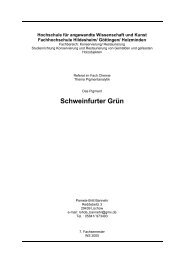Henrik Schulz* and Anita Horn, Archäomertrie-Labor der HAWK ...
Henrik Schulz* and Anita Horn, Archäomertrie-Labor der HAWK ...
Henrik Schulz* and Anita Horn, Archäomertrie-Labor der HAWK ...
You also want an ePaper? Increase the reach of your titles
YUMPU automatically turns print PDFs into web optimized ePapers that Google loves.
Manuscript, H. Schulz <strong>and</strong> A. <strong>Horn</strong>, Hildesheim, henrik.schulz@archaeometrielabor.com 11<br />
EXPERIMENTAL<br />
Sample Preparation<br />
Beech (hardwood) <strong>and</strong> spruce (softwood) were chosen because of the very common use as<br />
timber. Because of the important influence of the wood anatomical structure on the following<br />
measurements the cut of the raw material was the crucial moment. We used test samples with<br />
a fairly radial-tangential. If possible we have measured the contact angles only on areas of<br />
early wood regions.<br />
The test samples were cut mechanically using a circular saw <strong>and</strong> smoothed by a planning<br />
machine . The dimensions of the final test samples: 5 x 15 x 75 (high x broad x long; in<br />
millimetre). The storage of the test samples was in extra boxes in darkness un<strong>der</strong> room<br />
condition.<br />
Plasma Treatment<br />
The scheme of the discharge chamber are given in Figure 1 in the introduction. The<br />
construction of the chamber is non-commercial [6,7]. The material of the dielectric barrier is<br />
boron nitride (BN) which jackets the copper electrode. An alternating high voltage with<br />
separate high voltage pulses of 30 kV, a pulse duration of 2 µs <strong>and</strong> a pulse repletion rate of 15<br />
kHz is applied to the electrode, in or<strong>der</strong> to cause a discharge between the electrode <strong>and</strong> the<br />
wooden surface at atmospheric pressure. The distance between the electrodes was 20 mm <strong>and</strong><br />
that between the boron nitride electrode <strong>and</strong> the wooden surface of the test samples was 5<br />
mm. The air atmosphere was unconditioned, i.e. un<strong>der</strong> normal pressure <strong>and</strong> room temperature,<br />
but blown by a ventilator through the discharge gap with a rate of around 3 m/s. Immediately<br />
after the treatment the test samples were collected in boxes mentioned above. The activated<br />
surfaces should not be in direct contact with hol<strong>der</strong>s or other materials. The time between the<br />
plasma treatment <strong>and</strong> the following contact angles measurements <strong>and</strong> the staining procedure<br />
should be as short as possible.



